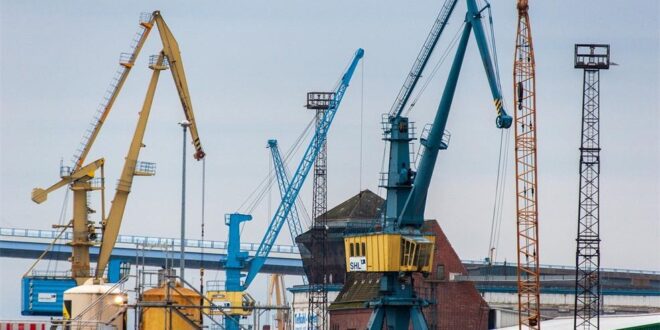Have you ever thought about the world of heavy industry after the sun goes down? It’s a completely different environment compared to the daytime. Working at night, particularly in industries like manufacturing, construction, and mining, brings its own set of challenges.
The quiet darkness can be deceiving, as hazards often lurk in the shadows, and safety risks are heightened.
The Unique Challenges of Heavy Industry at Night
Nighttime work environments present several factors that increase risk and decrease productivity. These challenges include:
1. Reduced Visibility
This is the most obvious and significant challenge when it comes to night shifts in heavy industry. In the dark, even the best lighting systems can’t fully replicate daylight. Workers can struggle to see clearly, making it easier to miss potential hazards, especially in industries that involve moving machinery or handling heavy materials.
Dim or shadowy areas increase the chances of accidents, whether it’s due to tripping over an unseen object or failing to notice a moving vehicle.
2. Fatigue and Reduced Alertness
Humans are naturally wired to be more awake and alert during the day, which means night shifts often result in tired and less-focused workers. Fatigue reduces reaction times, which is particularly dangerous in industries where precision and timing are critical, such as operating machinery or performing complex tasks.
Even with caffeine and good intentions, workers may find their concentration slipping as the night wears on.
3. Lower Temperatures
Working in the colder temperatures of the night, especially in outdoor environments, can impact both worker performance and equipment operation. Cold machinery might not function as efficiently, and workers who aren’t properly prepared for lower temperatures may struggle to stay warm, which could affect their focus and physical ability to complete tasks safely.
4. Isolation
Night shifts typically involve fewer staff on site. This creates a feeling of isolation, which can make workers feel more vulnerable. In case of emergencies, there may be fewer colleagues around to assist, meaning issues might not be addressed as quickly as they would during the day. Less supervision can also mean that unsafe practices go unnoticed.
5. Increased Risk of Security Issues
Security concerns can also rise at night, especially in large industrial settings. With fewer staff on site and reduced visibility, unauthorized access to the premises becomes a concern. This can not only result in theft or vandalism but also pose serious safety risks if intruders are present around hazardous equipment.
Safety Solutions to Address These Challenges
With the challenges of nighttime work being so evident, businesses need to adopt specific safety strategies to mitigate risks and ensure smooth, secure operations. Let’s dive into some practical solutions that can make a real difference.
1. Enhanced Lighting Systems
Lighting is crucial for ensuring visibility in the workplace. Installing high-quality, durable lighting systems that provide coverage in all areas of the site is a must. LED lights are a popular choice as they provide bright, clear illumination and are energy-efficient. It’s also important to ensure regular maintenance of lighting systems to prevent outages that could lead to dangerous conditions.
2. Fatigue Management Programs
Recognizing the impact of fatigue is vital. Companies should implement fatigue management strategies, such as rotating shifts to ensure workers are not consistently on night duty, providing designated rest breaks, and even offering transportation to and from the site to reduce the risk of accidents during commutes.
Ensuring workers have access to caffeine isn’t a bad idea, but encouraging healthy sleep habits and physical well-being can make a bigger difference in keeping alertness high.
3. Cold-Weather Gear and Equipment Maintenance
Preparing for the colder nighttime temperatures is essential. Workers should be provided with the appropriate clothing, including thermal wear, gloves, and boots, to keep warm. Additionally, businesses should ensure that machinery and equipment are maintained to withstand colder weather, which can prevent breakdowns that might occur during freezing conditions.
4. Emergency Communication Systems
In case of emergencies, it’s crucial that workers can quickly reach someone for help. Installing communication systems, such as radios or personal alert devices, ensures that employees can call for assistance if needed. Employers should also establish clear emergency protocols, so workers know exactly how to respond to incidents during the night shift.
5. Improved Security Measures
To address security concerns, businesses should consider adding security cameras, alarms, and motion-detecting lighting around their industrial sites. Hiring additional security personnel during the night or using modern security technology, like surveillance drones or automated alarm systems, can also help keep the premises safe and secure.
Ensuring that workers feel safe in their environment will improve morale and productivity.
Creating a Safer Nighttime Workplace
While the challenges of heavy industry at night may seem daunting, they are far from insurmountable. By focusing on improving visibility, managing worker fatigue, and ensuring safety protocols are followed, businesses can create a safer and more efficient nighttime work environment.
Are you involved in heavy industry and wondering how best to address these concerns? The solutions might involve investing in better technology, updating safety policies, or simply taking steps to improve communication with workers.
At the end of the day (or night), prioritizing safety benefits everyone. It ensures that workers go home unharmed, keeps operations running without costly disruptions, and builds a workplace culture that values the well-being of its people.
 khamush.com Lifestyle | Motivation | Poems
khamush.com Lifestyle | Motivation | Poems



